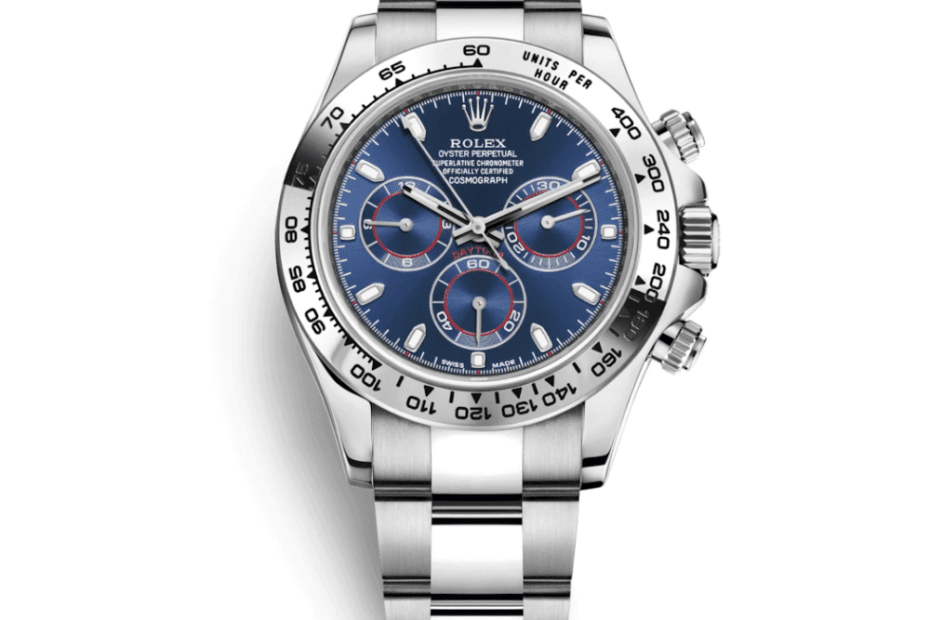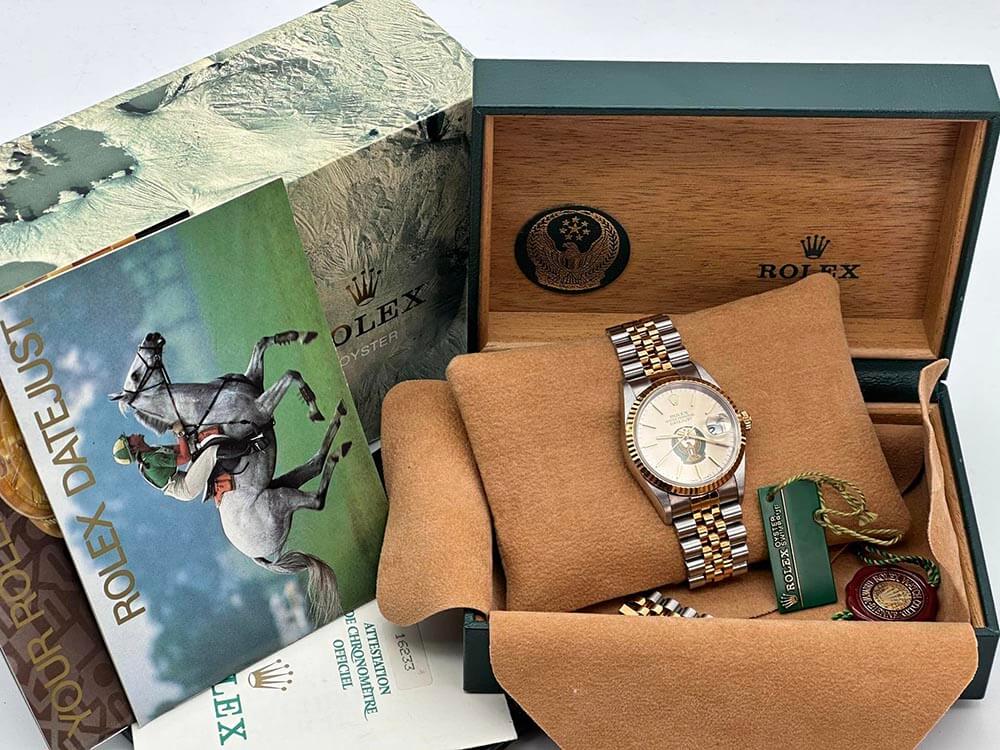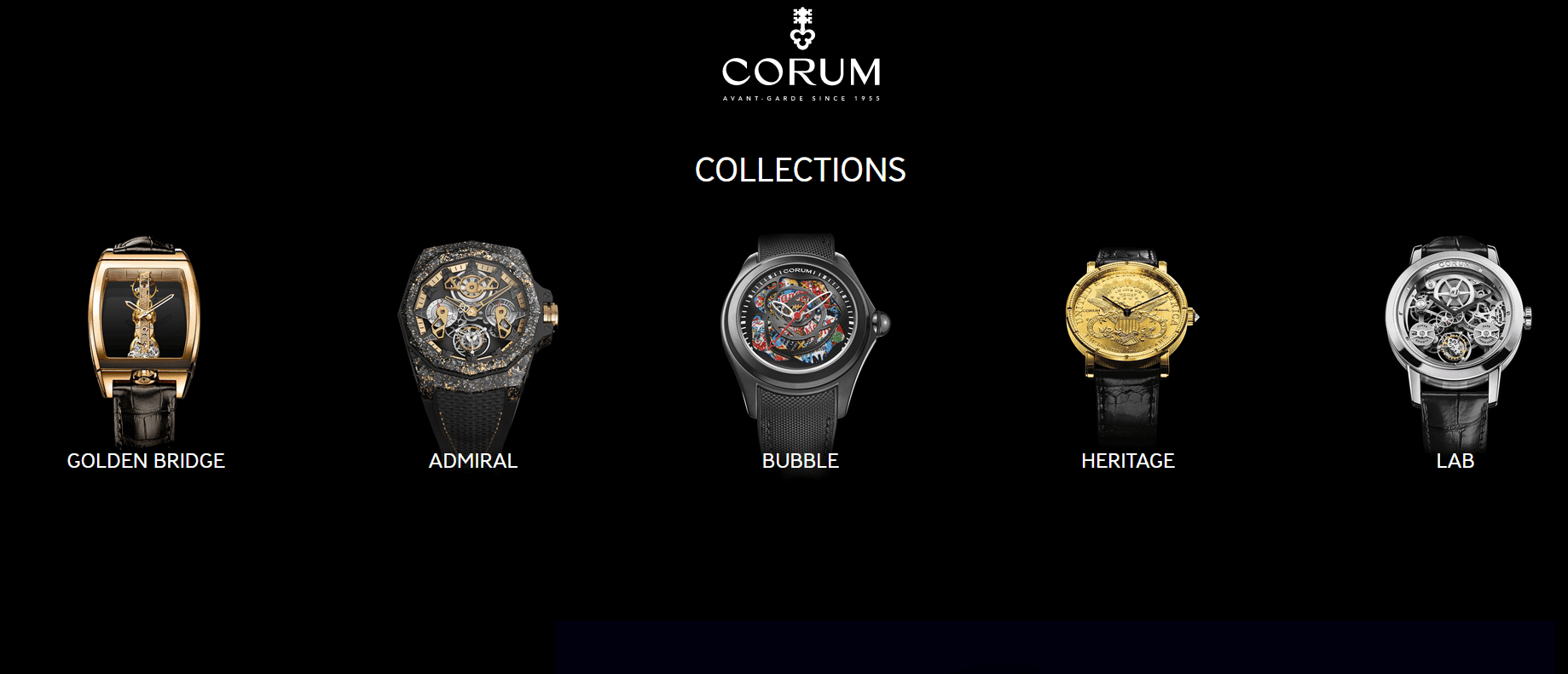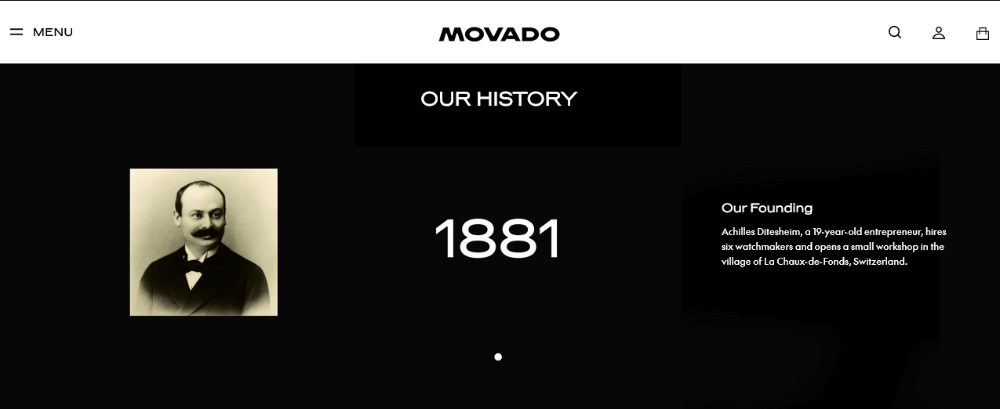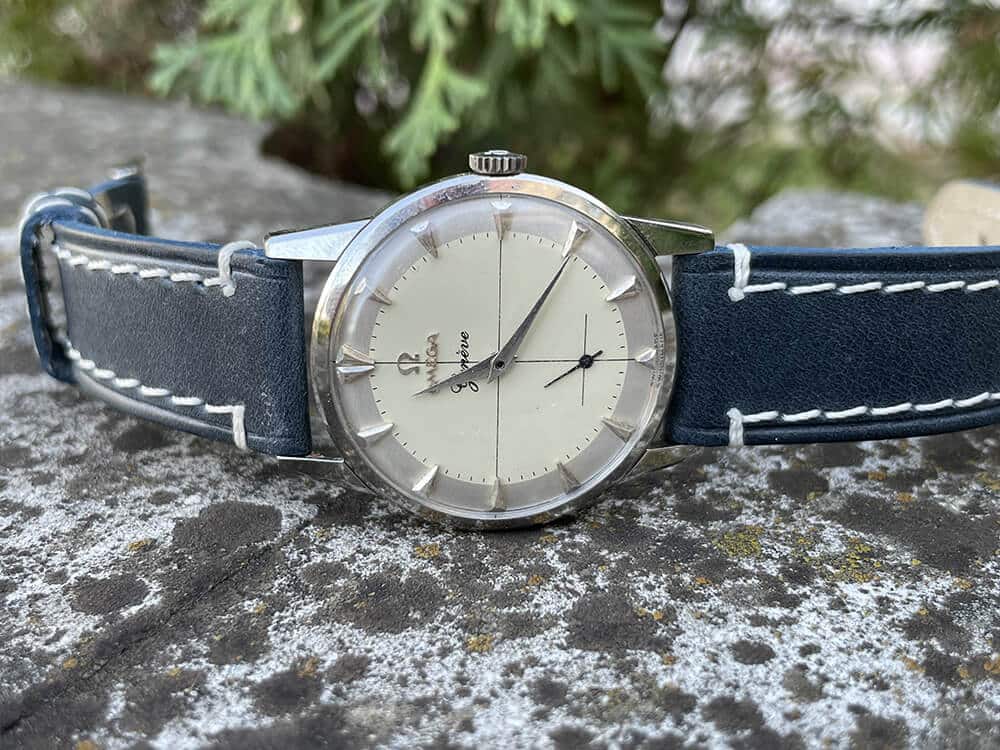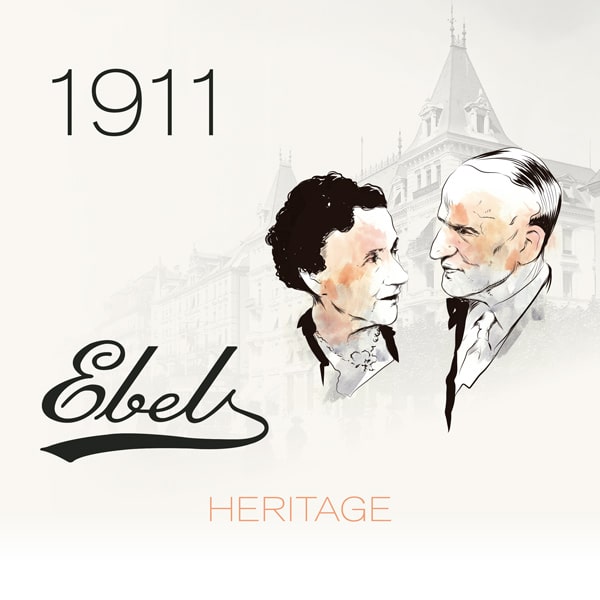📑 Table of Contents
The Rolex Daytona represents not just a watch but an emblem of precision, luxury, and the relentless pursuit of excellence. This exploration delves into the Rolex Daytona history, from a racing tool to a global status symbol.
Through decades of refinement, the Daytona has witnessed innovations like automatic movements and ceramic materials. Its association with motorsports legends like Paul Newman elevated its desirability among collectors. The release of special editions commemorating racing milestones further solidified its iconic status.
Today, the Rolex Daytona remains at the forefront of luxury watchmaking, symbolizing precision, performance, and unparalleled craftsmanship. Its enduring appeal continues to captivate watch enthusiasts worldwide, ensuring its place as a timeless classic for generations to come.
The Rolex Daytona History: Birth of a Racing Legend
The Rolex Daytona traces its origins back to the foundation of Rolex in 1905 by Hans Wilsdorf and Alfred Davis, with a focus on precision timekeeping. Over the years, Rolex garnered a reputation for innovative watchmaking, exemplified by the introduction of the Oyster case in 1926. This hermetically sealed case was a breakthrough in waterproofing technology, setting new standards for durability and reliability in wristwatches.
In the 1930s, as chronograph wristwatches emerged, Rolex explored the technology, acknowledging its potential for improved timekeeping.
In the early 1960s, Rolex aimed to craft a timepiece for professional race car drivers. This resulted in the Rolex Daytona. Named after the Daytona International Speedway, it catered to motorsport enthusiasts.
The Daytona was designed to offer unparalleled accuracy and reliability, featuring a chronograph function that allowed drivers to measure elapsed time and calculate average speeds.
These foundational elements established the Daytona as an iconic timepiece synonymous with performance and style from its inception.
The Oyster Case
In 1926, Rolex made a groundbreaking leap in watchmaking with the introduction of the Oyster case. This revolutionary design was the world’s first hermetically sealed waterproof case for wristwatches, setting a new standard for durability and reliability in timepieces. The Oyster case featured a patented system comprising a screw-down bezel, case back, and winding crown, effectively sealing the watch from moisture and dust infiltration. This innovation not only ensured the protection of the delicate internal components but also provided peace of mind to wearers in various environments, from everyday activities to adventurous pursuits.
The significance of the Oyster case extended beyond its waterproof capabilities. Its robust construction also enhanced the overall resilience of Rolex watches, making them suitable for rugged use. This breakthrough innovation laid a solid foundation for Rolex’s reputation as a manufacturer of tough and dependable timepieces, earning the brand widespread recognition and admiration. The Oyster case quickly became synonymous with quality craftsmanship and precision engineering, establishing Rolex as a leader in the watchmaking industry.
The introduction of the Oyster case marked a transformative moment for Rolex and the watchmaking world as a whole. Its innovative design not only addressed a fundamental need for waterproofing but also elevated the standards of wristwatch construction
Design and Technical Evolution
The initial models of the Rolex Daytona were equipped with manual winding movements supplied by Valjoux. These early versions boasted a simple yet functional design characterized by their three sub-dials that provided a clear and precise reading.
As the years progressed, Rolex continued to innovate. In 1988, Rolex introduced the Caliber 4030, based on the Zenith El Primero movement, marking a pivotal moment. This transition to an automatic movement enhanced Daytona’s appeal, combining the convenience of automatic winding with the precision Rolex was known for.
In addition to the transition to automatic movements, Rolex made further advancements to enhance the functionality and aesthetic appeal of the Daytona. Throughout the years, subtle refinements were made to the design, including improvements to the bezel, dial configurations, and case materials. The introduction of sapphire crystals provided greater scratch resistance, ensuring the longevity of the timepiece’s pristine appearance.
Significant Design
One of the most significant design updates came in the form of the introduction of the tachymeter bezel with an engraved scale. This feature allowed for precise measurement of speed and elapsed time, catering specifically to the needs of racing professionals and enthusiasts. The contrasting sub-dials remained a signature characteristic, ensuring optimal legibility and a balanced visual aesthetic.
In recent years, Rolex has continued to push the boundaries of innovation with the Daytona line, incorporating high-tech materials like Cerachrom ceramic into the bezels for enhanced durability and scratch resistance. Additionally, advancements in movement technology have led to increased accuracy and reliability, further solidifying the Daytona’s reputation as a precision instrument.
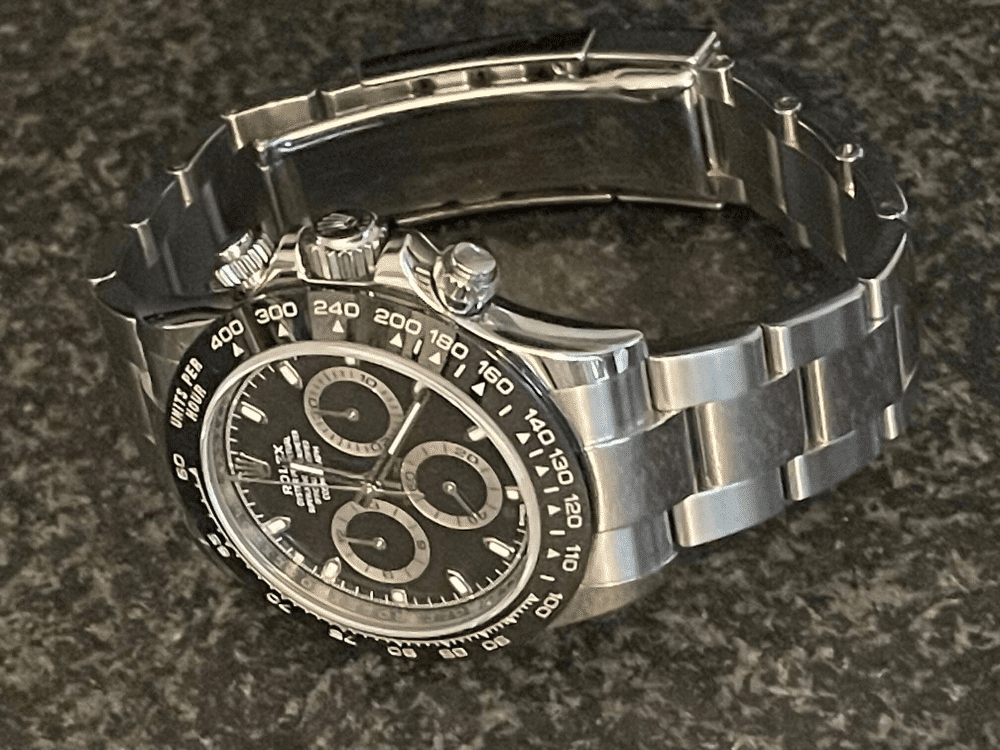
The turn of the millennium saw Rolex achieve another milestone with its in-house caliber 4130 debut. This movement, entirely developed and manufactured by Rolex, boasted fewer components than its predecessor, enhancing its reliability and ease of maintenance.
The caliber 4130 also featured a longer power reserve and a more efficient chronograph mechanism, solidifying the Daytona’s status as a masterpiece of horological engineering.
Cult Status and Celebrity Endorsement
The history of the Rolex Daytona is deeply intertwined with motorsports, notably through its association with prestigious events like the Daytona International Speedway. Since its inception, the Daytona model has been favored by racing professionals for its precision timing capabilities and durability on the track. This rich racing heritage has solidified the Daytona’s reputation as a timepiece synonymous with performance and speed.
The Rolex Daytona’s ascent to cult status is a story of scarcity, desirability, and celebrity influence. Perhaps no individual is more closely associated with the Daytona than actor and racing enthusiast Paul Newman.
Newman’s affinity for the Daytona propelled its popularity to new heights, sparking a phenomenon that led to the iconic “Paul Newman Daytona.” His personal Daytona, characterized by a distinctive dial that bore his name, became one of the world’s most sought-after and valuable watches.
Beyond motorsports, the Rolex Daytona has left an indelible mark on popular culture, appearing in various forms of media, including movies, literature, and even music. Its sleek design and association with adrenaline-fueled pursuits have made it a symbol of sophistication and adventure, captivating audiences worldwide.
The Modern Daytona: A Synthesis of Heritage and Innovation
Today’s Rolex Daytona watches continue to push the boundaries of what is possible in watchmaking. Introducing Cerachrom ceramic bezels on certain models has enhanced their aesthetic appeal and durability.
Rolex’s commitment to excellence is evident in every detail, from the tachymetric scale for measuring speed to the pushers that activate the chronograph function.
The modern Rolex Daytona represents a seamless fusion of its rich history and innovative advancements. Rooted in its storied racing heritage, the Daytona’s association with motorsports events, notably the Daytona International Speedway, remains deeply ingrained in its DNA.
Furthermore, its endorsement by racing legends like Paul Newman played a pivotal role in shaping its iconic status. The “Paul Newman Daytona” phenomenon heightened the watch’s popularity and historical significance, rendering it a coveted item among global collectors.
Why the Rolex Daytona Remains a Horological Marvel
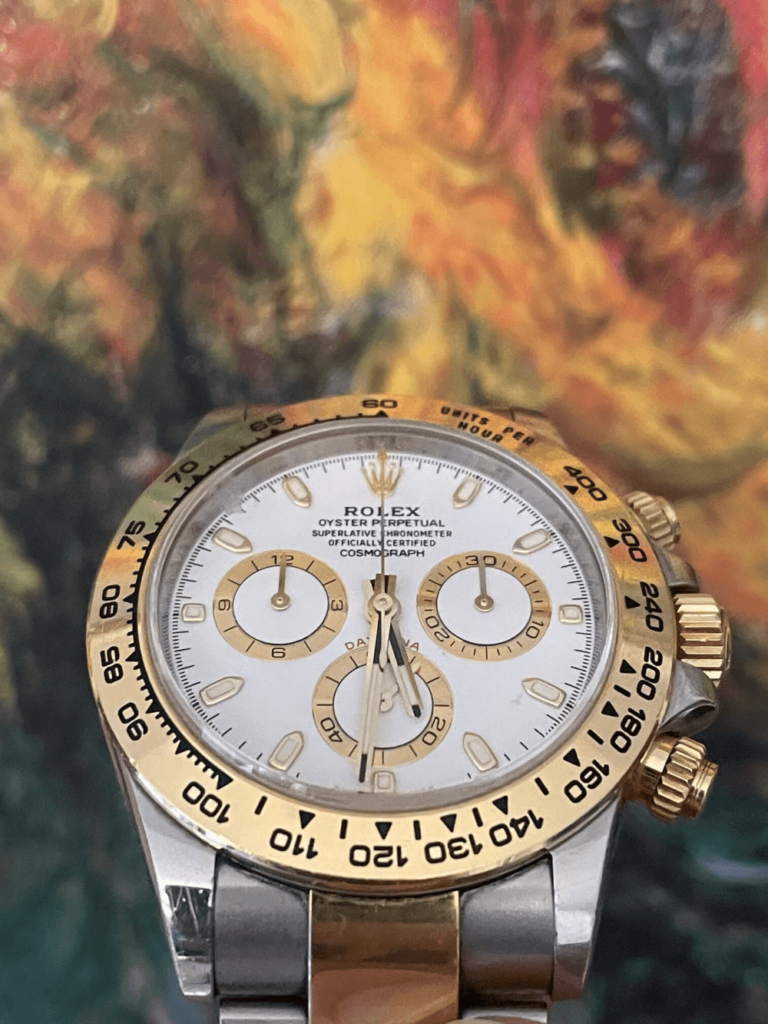
The Rolex Daytona is a horological marvel for numerous compelling reasons. First, its impeccable precision sets it apart. Crafted to meet the demands of professional racing, the Daytona ensures accuracy down to the last second.
Rolex’s pursuit of perfection led to precision, evolving from manual to automatic movements and culminating in the in-house caliber 4130. Each step in this journey has contributed to a more reliable, efficient, and precise timepiece.
Moreover, the Daytona’s design speaks volumes about its legacy. Its iconic tachymetric scale, a trio of sub-dials, and robust case are visually striking and functional. These features allow drivers to measure time and speed with unparalleled ease.
The transition to Cerachrom bezels on newer models underscores Rolex’s commitment to durability and innovation. This high-tech ceramic material resists scratches and fading, ensuring the watch remains as timeless as its legacy.
Then, there’s the allure of exclusivity. The Daytona’s rarity, driven by limited production and high demand, amplifies its desirability. Scarcity and associations with racing royalty like Paul Newman elevated the Daytona to a coveted status symbol.
It represents not just a watch but a piece of history, a marker of success, and a testament to an individual’s appreciation for the finer things in life.
In essence, the Rolex Daytona transcends its function as a timekeeper. It also embodies a blend of history, craftsmanship, and innovation. Owning a Daytona is a privilege for collectors—an opportunity to join a legacy celebrating precision, speed, and excellence. This is why the Rolex Daytona remains an undisputed champion in luxury timepieces.
Let’s conclude the Timeless Legacy of the Rolex Daytona!
The history of the Rolex Daytona is a chronicle of the relentless pursuit of perfection. This journey witnessed the Rolex Daytona transform from a racing tool to a symbol of success and craftsmanship.
Reflecting on its past and future, the Rolex Daytona transcends being a watch, embodying legend and inspiration.
The Rolex Daytona embodies racing’s essence and is celebrated by collectors. Its tale is one of innovation and excellence.
